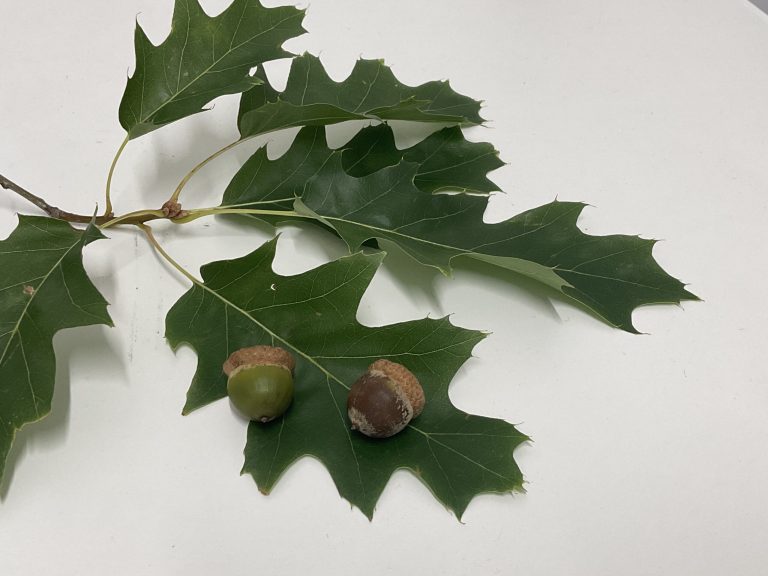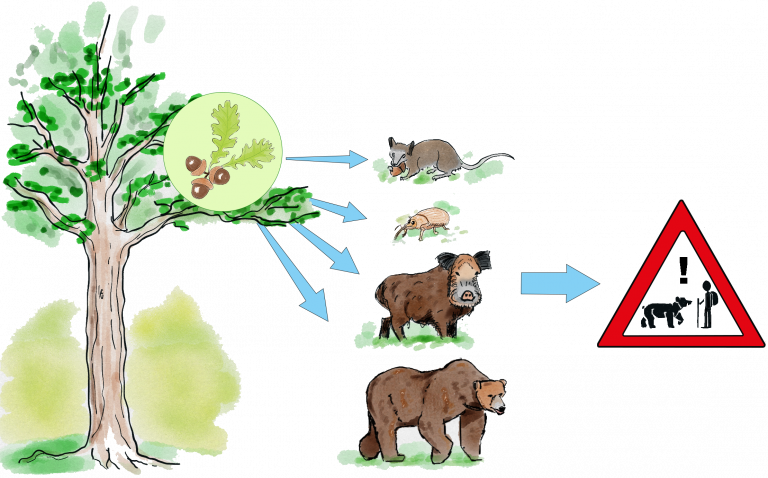Modeling tree masting
Joint press release by Hokkaido University and the National Institute for Environmental Studies.
The effects of a phenomenon called tree masting on ecosystems and food webs can be better understood thanks to new theoretical models validated by real world observations.

Some species of trees go through a process called masting, involving periodical cycles of synchronized mass production of fruits and seeds, followed by much lower production in the next year or over several subsequent years. Researchers at Hokkaido University have developed new computer-based models of masting that, amongst other uses, could help predict the effects of climate change on woodland and forests. Their work is published in the journal Ecological Modelling.
The effects of masting are not included in most commonly used dynamic vegetation models, a weakness that stimulated Tomomichi Kato, of Hokkaido University’s Research Faculty of Agriculture, and Lea Végh, of the National Institute for Environmental Studies, to address this gap.
The over-production of seeds during masting imposes considerable nutritional and energy costs on the trees, but it is believed to have evolved to ensure the survival of sufficient seeds. If the animals that feed on the seeds have a sudden excess supply, they cannot eat all of them and enough seeds will remain to develop into seedlings.
“In addition to understanding the effects of masting on trees, our model could be useful for projecting the long-term trend of food availability, such as acorn production, for wild animals,” says Végh.
Masting can cause an increase in the population of rodents, and lead to moth, tick and Lyme disease outbreaks, so it can have significant effects on the complex interactions between humans and the natural world.

Végh and Kato developed four models of masting using combinations of three major masting theories, which cover the trees’ resource budget, pollen limitation and exposure to weather patterns. The initial versions of their models are focused on the Japanese Oak (Quercus crispula), which allowed the predictions to be validated by observations in a local temperate forest research facility rich in oak trees.
The results indicated that masting could affect tree mortality. When trees allocate too many resources to the flowering and acorn production, they might not be able to secure resources for other processes, increasing the rate of tree death.
Of the four models, the one that focused on the resource budget and pollen limitation gave the best agreement with real observations.
“Our models can be readily adapted to other species, making them suitable for worldwide application, such as simulating the effects of climate change on masting and mitigating negative impacts on forest ecosystems and human–wildlife interactions,” says Kato.
Further developments of the model will initially cover all of Japan and parts of East Asia. To apply it even more widely, the researchers will then seek opportunities for obtaining validation data from collaborators in the USA and Europe.
Original Article:
Lea Végh, Tomomichi Kato. Modified SEIB-DGVM enables simulation of masting in a temperate forest. Ecological Modelling. December 8, 2023.
DOI: 10.1016/j.ecolmodel.2023.110577
Funding:
This study was supported by the Japan Society for the Promotion of Science (JSPS) Grant-in-Aid for Scientific Research (20H04317) and Grant-in-Aid for Transformative Research (21H05319).
Contacts:
Associate Professor Tomomichi Kato
Research Faculty of Agriculture
Hokkaido University
Tel: +81-11-706-4942
Email: tkato[at]agr.hokudai.ac.jp
Dr. Lea Végh
Biodiversity Division
National Institute for Environmental Studies
Email: lea.vegh[at]nies.go.jp
Sohail Keegan Pinto (International Public Relations Specialist)
Public Relations & Communications Division
Office of Public Relations and Social Collaboration
Hokkaido University
Tel: +81-11-706-2186
Email: en-press[at]general.hokudai.ac.jp
Planning Division, Public Relations Office
National Institute for Environmental Studies
Email: kouhou0[at]nies.go.jp
